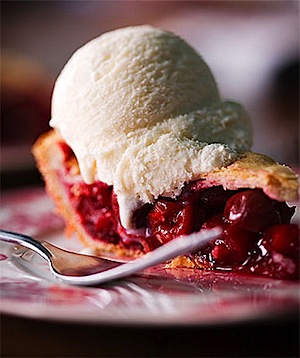Introduction
Steve Buchanan, a talented commercial photographer based in Maryland, has made a name for himself in the industry. Not only is he a contributor on the renowned Photocrati website, but his exceptional work can also be appreciated on his own website, Buchanan Studios. One particular subset of photography has captured the attention and fascination of many – food photography. Mentioning this specialty often elicits a resounding “wow!” response from people, making it an intriguing field to explore. In this article, we will delve into the world of food photography and discover what it takes to excel in this captivating niche.
Section 1: Understanding How Food Works
1.1 Being a Foodie
Being a food enthusiast can greatly facilitate your journey into food photography. Not only does it make life more enjoyable to be surrounded by things you love, but it also enables you to engage in meaningful conversations with clients and those in the industry. While you need not be a professional chef, having a passion for cooking, an appreciation for various cuisines, and a curiosity to learn about new foods are invaluable traits. Understanding the distinct characteristics and intricacies of different foods is fundamental to effectively capturing their essence through photography.
Section 2: Understanding How Light and Composition Work
2.1 The Power of Light
A thorough comprehension of how light operates and influences composition is essential in food photography, just as it is in any other form of photography. While specialized equipment may be necessary for certain shot types, such as splash and pour shots, beginners can achieve remarkable results with minimal equipment. Good window light, a sturdy tripod, and a few reflector cards can go a long way in producing stunning food images. Familiarize yourself with different lighting techniques and learn how to effectively utilize the tools at your disposal.
Section 3: Understanding Food Styling Processes
3.1 Distinction between Consumption and Photography
Frequently, people assume that the food they see on their plates is the same as the food showcased in food photography. However, there is a significant difference between food created for consumption and food crafted for photography. While becoming a trained food stylist is not mandatory, understanding the processes and techniques involved can elevate your ability to manipulate and style food for photography effectively. A fun and practical exercise to enhance your understanding is to carry a camera with you for a week and capture images of every meal before indulging. This exercise will showcase the effort required to make food visually appealing for photography purposes.
3.2 Exploring Workflows
For those curious about the workflow of food photography, it can be educational to explore recent food shoots. Watching videos or reading articles detailing the behind-the-scenes intricacies of such shoots can provide valuable insights and spark creativity. Understanding the workflow enables you to develop your unique process by integrating effective techniques and implementing improvements along the way.
Section 4: Creating an Emotional Response
4.1 Eliciting Emotions through Visual Cues
Great meals have the ability to evoke powerful emotions. Capturing and conveying those emotions through the medium of photography is a challenging yet rewarding endeavor. In food photography, you have the opportunity to use visual cues to elicit similar emotional and biological responses in your viewers. By experimenting with various techniques such as selective focus, hard light, chiaroscuro, and contrasting colors, you can create visually striking images that engross your audience and stimulate their senses.
Section 5: Learning from Others
5.1 Studying the Masters
Gaining inspiration from the work of other photographers and artists who specialize in food photography is invaluable. Take the time to study their portfolios, carefully observing and analyzing what draws you to their work. Understanding why certain aspects appeal to you allows you to incorporate and adapt those elements into your own photographs. This process of observing and assimilating influences helps you develop your unique style and perspective within the realm of food photography.
Section 6: Embracing the Continuous Learning Process
6.1 Food Photography as a Lifelong Pursuit
Embarking on a journey in food photography is akin to stepping into a lifelong pursuit of continuous learning and improvement. The beauty of this genre lies in its ability to be pursued at one’s own pace. Unlike other types of photography that often require models, specific locations, or elaborate wardrobes, food photography can be practiced anywhere. Simply visiting a local store, procuring ingredients, and shooting the food allows for constant practice and refinement of skills. Embrace the words of Thomas Edison, who famously said, “Genius is one percent inspiration and ninety-nine percent perspiration.” It’s through consistent effort and practice that your skills as a food photographer will truly flourish.
Conclusion
Food photography is undeniably captivating and offers endless possibilities for creative expression. Be sure to lay a foundation by immersing yourself in the world of food, understanding the fundamentals of light and composition, and exploring food styling techniques. Seek inspiration from others, both within and beyond the realm of photography, and continuously strive to improve your skills. Embrace the process of learning and recognize that, with dedication and persistence, you can achieve excellence in food photography. So, grab your camera, procure some delectable ingredients, and embark on a gastronomic photographic adventure!
The article is compiled and compiled by tipcamera.com




